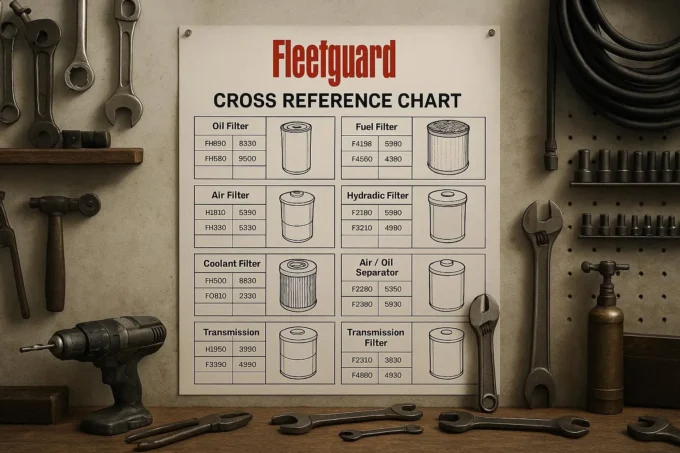Key Takeaways:
- Insight into the significance of thermal management in electronic device performance and longevity.
- An examination of the cutting-edge innovations in cooling technologies that maintain device efficiency.
- A forward-looking perspective on the potential future advancements in thermal management.
Table of Contents
- Introduction
- The Basics of Electronic Cooling
- Innovation in Fan and Cooling Technologies
- The Importance of Proper Thermal Management
- Thermal Management in Different Industries
- Design Considerations for Enhanced Cooling
- Selecting the Right Cooling Solution for Your Electronics
- Case Studies and Real-World Examples
- The Future of Thermal Management
Introduction
Thermal management plays a lead role in the intricate dance of electrons that power our modern world, ensuring that every step is flawlessly executed. As electronic devices grow exponentially in power and shrink in size, cooling systems work behind the scenes to prevent the symphony from overheating and devouring itself. This balancing act between power and thermal control is a cornerstone of the industry that has witnessed tremendous advancements over the years. From simple heatsinks to complex liquid cooling systems, thermal management has evolved to meet the demands of an ever-accelerating pace of innovation. Today, as the unsung hero of electronics, thermal management remains as crucial as ever—a sentinel standing guard over the gates of functionality and performance.
The Basics of Electronic Cooling
Imagine a bustling city on a hot summer day, the sun beating down on concrete and steel. In the same way, electronic devices generate heat as they operate, an inescapable byproduct of their function. As energy flows through the semiconductors and resistors, some of it is lost, appeased by the laws of physics as heat. This heat must escape, or the electronic metropolis within can fail. The methods of dispatching this unwanted heat are conduction, where heat is passed through materials; convection, where it’s carried away by fluids (usually air); and radiation, where it’s emitted as infrared energy. Efficient thermal management involves exploiting these mechanisms to maintain a safe operating temperature. While passive cooling relies on natural processes—think of a heat sink quietly radiating warmth—active cooling systems, such as fans and pumps, work tirelessly to move heat away from delicate electronic components forcibly. It’s a world where efficiency intersects with necessity, keeping the digital heartbeats of our devices steady and robust.
Innovation in Fan and Cooling Technologies
As we look to the horizon of technological advancement, fan and cooling technologies emerge as pioneering force bearers, heralding a triumphant era of innovation. Engineers and designers push the boundaries of material science to create heat sinks that dissipate heat faster and are lighter and less intrusive than ever before. Fans are being reimagined: their blades, motors, and the air they displace are subject to intense scrutiny in the quest for cooling systems that are whisper-quiet and formidable in airflow. On the environmental front, strides are being made toward developing eco-friendly cooling solutions that promise a symbiotic relationship between technology and nature, proving that effective thermal management and environmental stewardship coexist harmoniously.
The Importance of Proper Thermal Management
The role of thermal management in device reliability must be balanced. Well-cooled devices don’t just run; they sprint, unfettered by the thermal throttling that can slow their counterparts. Excess heat is the nemesis of electronic components: it assails their lifespans, emboldens their failure rates, and usurps their performance. Effective thermal management is the hero in this narrative, actively extending the operational life of devices and warding off the specter of heat-induced fatigue. For consumers, this translates to gadgets and appliances that fulfill their electronic destinies without premature burnout. Manufacturers, parallelly, reap the rewards of customer satisfaction and brand loyalty, underpinned by the robustness and reliability of their thermally-optimized products.
Thermal Management in Different Industries
Thermal management systems are the chameleons of the technology world, adapting fluidly to the varied demands of different industries. In automotive applications, where the heat of combustion engines meets the efficiency of electronics, robust thermal systems maintain equilibrium in harsh conditions. Thermal management means scalability and efficiency within the dense forests of data center server racks, directly impacting operational costs and the bottom line. As electronics permeate every facet of life, from the depths of the sea to the vacuum of space, thermal solutions conform to the rigors of industry-specific regulations, dictating materials, design, and the ultimate viability of products.
Design Considerations for Enhanced Cooling
The battle against heat begins not when a device is powered on but when it is conceived. Design plays an indispensable role in thermal management. It’s a game of precision where the chess pieces of components are arrayed, not solely for function or aesthetics but optimized for their thermal roles. In the realm of miniaturization, where electronics shrink to the imperceptible, the struggle for efficient heat removal intensifies. Material choice becomes paramount—certain metals known for their conductivity, thermal interface materials designed for maximum heat transfer, and components placed strategically all serve the singular goal of keeping devices cool. Thermal considerations infused early into the design can save costs, extend product lifespans, and ensure customer satisfaction.
Selecting the Right Cooling Solution for Your Electronics
Finding the ideal cooling solution is akin to choosing the perfect garment—a tailored fit is paramount. Many factors whisper secrets about which thermal strategy will suit: the ambient environment where the device will serve, the spatial constraints within which it must conform, and the power it draws as it operates. The spectrum of solutions is broad, from simple fans that whisper air across a heat sink’s fins to complex liquid systems that run like life’s blood through an electronic organism. A diligent assessment of options, against the backdrop of these considerations, will reveal the most efficient and effective cooling path. Moreover, real-world testing and validation underpin the theory with hard evidence of thermal victory.

















Leave a comment